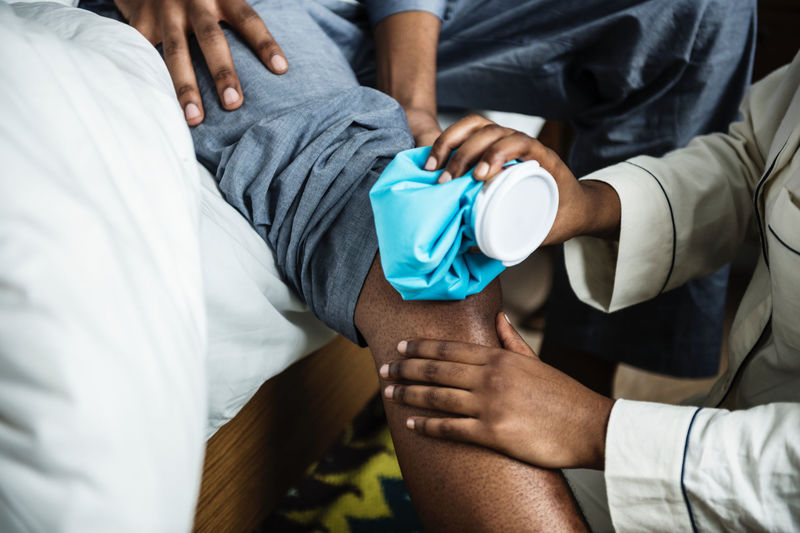Genetic explorers of soft-tissue injuries
08 January 2019 | Story Joanne Carew. Photo rawpixel, unsplash. Read time 10 min.
If you ask Professor Alison September and Dr Andrea Gibbon to describe their recent study in a single sentence, they struggle to do so. It isn’t because this pair of savvy scientists are overly verbose, it’s because they’re so passionate about the work they do.
As the principal investigator on the project and professor within the Exercise Science and Sports Medicine division of UCT, September shares that the study was conducted over about four years and was done on a shoestring budget.
“Designing the concept with such a small amount of money, we really thought it wouldn’t be possible. But we persevered and look where we are today.”
A novel approach, and a first for studies of Achilles tendinopathy, the research generated data that provides a DNA sequence road map that can be used to explore people’s susceptibility to these injuries.
The research, published in the journal PLOS ONE, applied next generation sequencing technologies to improve the understanding of genetic susceptibility to injuries of musculoskeletal soft tissues, such as tendons, ligaments and skeletal muscles. A novel approach, and a first for studies of Achilles tendinopathy, the research generated data that provides a DNA sequence road map that can be used to explore people’s susceptibility to these injuries.
What makes a person susceptible to injury?
September and Gibbon’s study focused on ligaments and tendons, which are commonly injured during occupational and sporting activities. Their research looked at sports injuries suffered due to overuse as well as cases of more sudden, acute injuries.
The study provides proof of concept for the use of whole exome sequencing – a technique for sequencing the DNA code of all protein-coding genes in a genome. Collectively, these protein-coding genes are known as the exome.
They wanted to explore the idea that specific changes in human genes could influence a person’s susceptibility to injury.
September and Gibbon identified variations in the DNA code for a particular type of protein called Tenascin C, which is abundant in developing tendons, bone and cartilage – among other things. Variants of the Tenascin C gene were associated with risks of musculoskeletal soft tissue injuries, including Achilles tendinopathy and knee ligament injuries. They found that a specific code within the gene for Tenascin C increased risk of these injuries.
September and Gibbon’s project involved sequencing 20 individuals: 10 controls (those who hadn’t suffered an injury) and 10 cases (those who had suffered multiple Achilles tendon injuries). They wanted to explore the idea that specific changes in human genes could influence a person’s susceptibility to injury. This was based on the observation that certain people can run much of their lives without injury, while other, younger individuals can suffer multiple, chronic injuries.
“We know that this is such a multifactorial condition, but we are looking specifically at the genetics of these injuries, asking if these individuals have a genetic profile that is different,” Gibbon explains. “If there is a pattern across their genome that may contribute to their predisposition.”
Achieving the impossible
The project was originally started by Professor Malcolm Collins in the early 2000s. “At the time, with the technology available, people thought it was impossible to find a genetic component to a sporting injury. But, today, we’ve proved them wrong,” notes September.
Their rationale was deemed quite crazy, which meant that they were continuously being asked to defend their approach. By bringing together a combination of factors, the study adopted an integrated, multidisciplinary approach, September continues. These factors included prior knowledge in the field, sequencing data, a bioinformatics tool developed through the South African National Bioinformatics Institute (SANBI) in partnership with Dr Colleen Saunders and Professor Junaid Gamieldien, functional data and statistical analysis.
This research was the focus of Gibbon’s PhD. She believes that the broad scope of the study lends weight to their findings.
“We know that this is such a multifactorial condition, but we are looking specifically at the genetics of these injuries, asking if these individuals have a genetic profile that is different.”
“We looked at some of the important proteins involved in tendon and ligament regulation. We looked at the genes that code for these proteins and then we explored the sequencing data to identify variants that could possibly be associated with this clinical condition.”
If one thinks of the genome as 3.6 billion ‘letters’ long, Gibbon and September are homing in on and exploring the functionality of a particular address along this massive string of information. And once they understand the function of the genes at these addresses, they can start looking at how to treat problems and even identify what preventative measures may be helpful.
Prevention is better than cure
When you look at extreme athletes, they have a certain personality type. Exercise and activity are their life, explains September. Now imagine how these individuals would struggle if they suffered a terrible injury and had to give up their passion.
“This roadmap gives us the chance to target them, monitor them and strengthen their connective tissue before anything goes wrong,” says September.
“We really are explorers,” she says. “Much like Vasco da Gama and Captain James Cook were pioneers when it came to mapping unknown corners of the world, we’re creating maps of our genetic sequences.”
The real value is in pre-habilitation, adds Gibbon. If we can identify those people who are predisposed to injury, it’s possible to monitor their training programmes, to suggest what type of equipment they should be using and advise them around getting enough rest.
“It’s about putting in preventative measures rather than fixing an issue after it’s happened,” she adds.
Looking at the potential value this research offers those of us who aren’t athletic, Gibbon – an avid runner herself – asserts that having access to this kind of information will not only help professional athletes minimise injury risks, it will also give average individuals the confidence they need to get exercising.
While this duo acknowledges that the science world is still in the starting blocks when it comes to understanding the genome, they’re excited about the impact this research could have in the future. Going forward, September’s next endeavour is a project in collaboration with researchers from Poland. They’re looking at injuries among twins, their parents and siblings, and comparing what genetic similarities there are between the twins and the rest of their families.
“We really are explorers,” she says. “Much like Vasco da Gama and Captain James Cook were pioneers when it came to mapping unknown corners of the world, we’re creating maps of our genetic sequences.”
 This work is licensed under a Creative Commons Attribution-NoDerivatives 4.0 International License.
This work is licensed under a Creative Commons Attribution-NoDerivatives 4.0 International License.
Please view the republishing articles page for more information.
Research & innovation





































